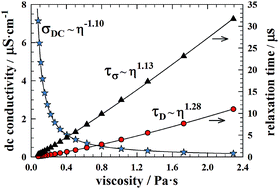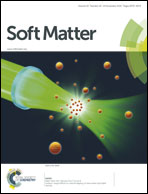Compliance of the Stokes–Einstein model and breakdown of the Stokes–Einstein–Debye model for a urea-based supramolecular polymer of high viscosity
Abstract
Impedance spectroscopy was used for the study of the static and dynamic behavior of the electrical conductivity of a hydrogen-bonded supramolecular polymer of high viscosity. The experimental data are discussed in the frame of the Stokes–Einstein and Stokes–Einstein–Debye models. It was found that the translational movement of the ions is due to normal Brownian diffusion, which was revealed by a fulfillment of Ohm’s law by the electric current and a strictly exponential decay of the current after removing the electric stimulus. The dependence of the dc conductivity on the viscosity of the medium fulfills the Stokes–Einstein model quite well. An extension of the model, by including in it the conductivity relaxation time, is proposed in this paper. A breakdown of the Stokes–Einstein–Debye model is revealed by the relations of the dipolar relaxation time to the viscosity and to the dc ionic conductivity. The importance of the C![[double bond, length as m-dash]](https://www.rsc.org/images/entities/char_e001.gif) O⋯H–N hydrogen bonds in that breakdown is discussed.
O⋯H–N hydrogen bonds in that breakdown is discussed.


 Please wait while we load your content...
Please wait while we load your content...